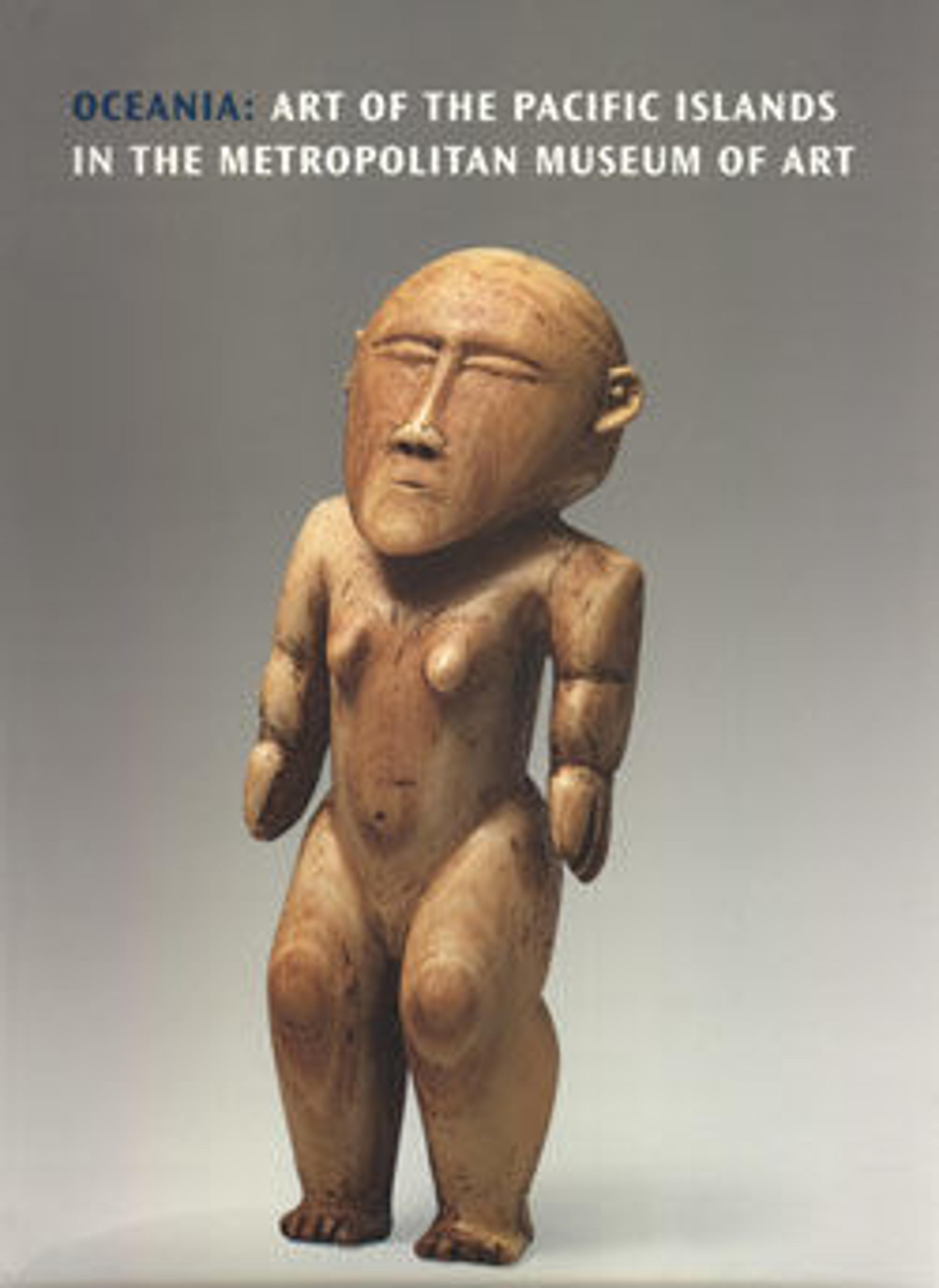House Post
This imposing housepost once formed one of the supporting members of a ceremonial house in the lower Ramu River region on the north coast of New Guinea. Lower Ramu carving forms part of the broader Lower Sepik tradition, which encompasses the art of the lower Sepik and Ramu Rivers, the Murik Lakes, and adjacent offshore islands.
The widespread exchange of ritual paraphernalia such as masks and figures throughout the Lower Sepik region has resulted in a rich cross-fertilization of artistic styles. Indeed, though this housepost was collected in the Ramu River area, the treatment of the human figure and motifs employed suggest the artist came originally from the Murik Lakes or was strongly influenced by Murik techniques and iconography. Art in the Lower Sepik region centers on the representation of important ancestors and spirits. The supporting posts of ceremonial houses, such as the present work, are richly decorated with depictions of the ancestors, spirits, and sacred masks associated with the house. Representations of spirits frequently have long beak-like noses, which evoke the heads of totemic birds, while the noses of human ancestors are more naturalistically rendered. Images of both ancestors and spirits as well as depictions of sacred masks can be seen on this housepost.
The widespread exchange of ritual paraphernalia such as masks and figures throughout the Lower Sepik region has resulted in a rich cross-fertilization of artistic styles. Indeed, though this housepost was collected in the Ramu River area, the treatment of the human figure and motifs employed suggest the artist came originally from the Murik Lakes or was strongly influenced by Murik techniques and iconography. Art in the Lower Sepik region centers on the representation of important ancestors and spirits. The supporting posts of ceremonial houses, such as the present work, are richly decorated with depictions of the ancestors, spirits, and sacred masks associated with the house. Representations of spirits frequently have long beak-like noses, which evoke the heads of totemic birds, while the noses of human ancestors are more naturalistically rendered. Images of both ancestors and spirits as well as depictions of sacred masks can be seen on this housepost.
Artwork Details
- Title:House Post
- Date:early to mid-20th century
- Geography:Papua New Guinea, Lower Sepik, Lower Ramu River region
- Culture:Lower Ramu River region
- Medium:Wood, fiber, shell, paint, feathers, plastic, metal
- Dimensions:H. 16 ft. 2 in. × W. 14 in. × D. 10 in. (492.8 × 35.6 × 25.4 cm)
- Classification:Wood-Architectural
- Credit Line:Gift of Horace W. Brock, in memory of Benjamin F. Dillingham II, 1999
- Object Number:1999.104
- Curatorial Department: The Michael C. Rockefeller Wing
More Artwork
Research Resources
The Met provides unparalleled resources for research and welcomes an international community of students and scholars. The Met's Open Access API is where creators and researchers can connect to the The Met collection. Open Access data and public domain images are available for unrestricted commercial and noncommercial use without permission or fee.
To request images under copyright and other restrictions, please use this Image Request form.
Feedback
We continue to research and examine historical and cultural context for objects in The Met collection. If you have comments or questions about this object record, please contact us using the form below. The Museum looks forward to receiving your comments.
